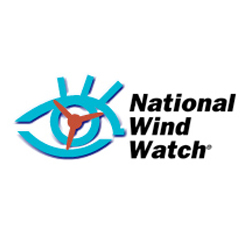 “The Arctic Ocean is warming up! Icebergs are growing scarcer, and in some places, seals are finding the water too hot according to a report to the Commerce Department yesterday from Consulate at Bergen, Norway. Reports from fishermen, seal hunters, and explorers all point to a radical change in climate conditions and historically unheard-of temperatures in the Arctic zone.
“The Arctic Ocean is warming up! Icebergs are growing scarcer, and in some places, seals are finding the water too hot according to a report to the Commerce Department yesterday from Consulate at Bergen, Norway. Reports from fishermen, seal hunters, and explorers all point to a radical change in climate conditions and historically unheard-of temperatures in the Arctic zone.
Exploration expeditions report that scarcely any ice has been met as far north as 81 degrees 29 minutes. Soundings to a depth of 3,100 meters showed the gulf stream still very warm.
Great masses of ice have been replaced by moraines of earth and stones, the report continued, while at many points, well known glaciers have entirely disappeared.
Very few seals and no white fish are found in the eastern Arctic, while vast shoals of herring and smelts, which have never before ventured so far north, are being encountered in the old seal fishing grounds.
Within a few years, it is predicted that due to the ice melt, the sea will rise and make most coast cities uninhabitable.”
Oh, I neglected to mention that this news article was from November 2, 1922 , as reported by the AP and published in The Washington Post. That was 96 years ago. This must have been caused by the Model T Ford’s emissions or possibly from horses 🐎 🐎and cattle 🐄 🐄 passing gas. You can check this out for yourself on SNOPES, a liberal leaning truth checker and they found it is true.
 Now there is a word I have not seen lately. And, it struck me as refreshing, but a bit odd that the wind industry would be the one to point out that Iowans are gullible if they swallow the idea that wind creates jobs. As we have all learned, there is almost always more the to the story. It was especially remarkable that the article uses the famous movie The Music Man to illustrate the gullibility.
Now there is a word I have not seen lately. And, it struck me as refreshing, but a bit odd that the wind industry would be the one to point out that Iowans are gullible if they swallow the idea that wind creates jobs. As we have all learned, there is almost always more the to the story. It was especially remarkable that the article uses the famous movie The Music Man to illustrate the gullibility. Most of us are fully aware of the concerns about methane released into our environment. It has over 30 times the influence on trapping heat in our atmosphere. So, it was without surprise that the cattle industry came under scrutiny and criticisms for methane release, which is called “bovine flatulence.” Money was being spent studying this, which included research on reformulating the grasses as feedstock to see if these natural emissions could be reduced.
Most of us are fully aware of the concerns about methane released into our environment. It has over 30 times the influence on trapping heat in our atmosphere. So, it was without surprise that the cattle industry came under scrutiny and criticisms for methane release, which is called “bovine flatulence.” Money was being spent studying this, which included research on reformulating the grasses as feedstock to see if these natural emissions could be reduced. A recent Facebook video of Sr. Ken Robertson’s TED Talk struck a nerve. “If you’re not prepared to be wrong, you’ll never come up with anything original.”
A recent Facebook video of Sr. Ken Robertson’s TED Talk struck a nerve. “If you’re not prepared to be wrong, you’ll never come up with anything original.”